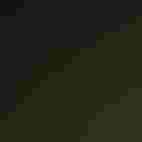Whooping Crane
At a Glance
One of the rarest North American birds, and also one of the largest and most magnificent. Once fairly widespread on the northern prairies, it was brought to the brink of extinction in the 1940s, but strict protection has brought the wild population back to well over one hundred. The flock that winters on the central Texas coast flies 2400 miles north to nest in Wood Buffalo National Park in central Canada; this remote breeding area was not discovered until 1954.
All bird guide text and rangemaps adapted from Lives of North American Birds by Kenn Kaufman© 1996, used by permission of Houghton Mifflin Harcourt Publishing Company. All rights reserved.
Category
Cranes, Long-legged Waders
IUCN Status
Endangered
Habitat
Coasts and Shorelines, Fields, Meadows, and Grasslands, Freshwater Wetlands, Saltwater Wetlands
Region
Florida, Plains, Rocky Mountains, Southeast, Texas, Western Canada
Behavior
Direct Flight, Flap/Glide, Formation
Population
370
Range & Identification
Migration & Range Maps
Migrates by day, in family groups or small flocks. Travels along rather narrow corridors and makes traditional stopovers. Although they may travel in flocks, in winter they mostly separate out into family groups, each pair of adults defending a feeding territory against intruding cranes.
Description
45-50" (1.1-1.3 m). W. 7' 6 (2.3 m). Mostly white, with black in wings and dark pattern on head. Much larger than egrets, different shape. Adult has bare red skin on head, juvenile has brown on head and back. Black wing pattern shows in flight; compare to Wood Stork, also American White Pelican.
Size
About the size of a Heron
Color
Black, Brown, Red, Tan, White, Yellow
Wing Shape
Broad, Fingered, Pointed
Tail Shape
Short
Songs and Calls
A trumpet-like call that can be heard for several miles.
Call Pattern
Flat, Simple
Call Type
Scream, Yodel
Habitat
Muskeg (summer); prairie pools, marshes. Current breeding habitat is in remote northern forest, in areas of muskeg (swampy coniferous woods with numerous lakes and ponds). Formerly also nested in prairie marshes. Winters in coastal marsh, where adult pairs and families defend territories, returning to same territory each winter.
Sign up for Audubon's newsletter to learn more about birds like the Whooping Crane
Behavior
Eggs
2, sometimes 1 or 3. Olive-buff, spotted with dark brown. Incubation is by both sexes, 29-31 days; female usually incubates at night.
Young
Downy young leave nest within a few hours after hatching. Both parents feed young. Two eggs typically hatch, but very rarely or never does more than one young bird survive. Young is able to fly at about 3 months after hatching.
Feeding Behavior
See family introduction.
Diet
Omnivorous. In winter, eats insects, shrimp, crabs, clams, snails, frogs, snakes, small fish, seeds, acorns, roots, berries. Summer diet not well known, probably a similarly wide variety of animal and plant matter.
Nesting
In courtship, pairs "dance," leaping into air repeatedly with flapping wings, bills pointed upward, giving bugling calls; dance has a dignified look. Other displays include bowing, tossing tufts of grass in the air, and loud trumpeting or "whooping" calls. Nest site is on ground, typically on marshy island in lake or pond. Nest (built by both sexes) is a large mound of grass, weeds, mud, with depression at center.
Conservation
Conservation Status
Endangered. Whoopers once nested on the northern prairies south to present-day Iowa and Illinois, but they disappeared as settlers moved in. As recently as 1912, about 90 birds wintered at various points in coastal Texas and Louisiana, and there was a nonmigratory population in southwestern Louisiana as well. By 1941 the Texas wintering flock was down to only 15 birds (another six were still resident in Louisiana, but that flock soon dwindled away). After 1941, numbers very gradually rose again, helped by protection on the wintering grounds and public education against shooting; by the mid-1990s, the Texas wintering flock approached 150. Attempts to start a new flock farther west (by putting Whooper eggs under Sandhill Cranes in Idaho) failed, but in the 1990s a new project aimed to start a nonmigratory flock in Florida, using birds raised in captivity. Most recently, an ambitious project has established a new flock that summers in Wisconsin, with young birds raised and then trained to follow an ultralight aircraft to Florida for their first southward migration.
Climate Threats Facing the Whooping Crane
Choose a temperature scenario below to see which threats will affect this species as warming increases. The same climate change-driven threats that put birds at risk will affect other wildlife and people, too.








